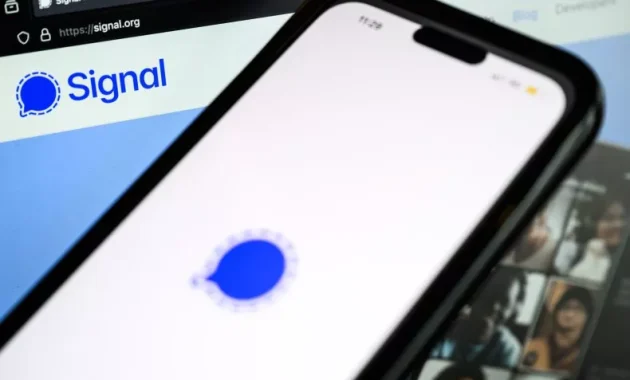As the U.S. gears up for a potential second Trump administration, Project 2025, a conservative blueprint developed by the Heritage Foundation, has once again come under scrutiny—this time for its stance on secure messaging apps like Signal.
In light of recent revelations that Trump officials allegedly used Signal to discuss military operations, critics are questioning whether such apps are being misused to bypass federal transparency laws like FOIA (Freedom of Information Act). The controversy deepened after a training video from Project 2025 resurfaced online, revealing behind-the-scenes guidance on how appointees might handle communications while in office.
Why Signal is at the Center of the Controversy
The discussion reignited after a report revealed that Trump-era officials used Signal to coordinate sensitive military actions—including a strike against the Houthis in Yemen. In an apparent blunder, they even included Atlantic editor-in-chief Jeffrey Goldberg in a group chat, sparking national security concerns.
The situation raises serious questions: Are secure, encrypted apps like Signal being used to hide official conversations from public record laws? And what does Project 2025 actually say about it?
Inside Project 2025’s Advice on Signal
Project 2025, though controversial throughout the 2024 campaign, was designed to train incoming Republican administration officials. In a resurfaced training video, key figures—Mike Howell (Heritage Foundation), Michael Ding (America First Legal), and Tom Jones (American Accountability Foundation)—discussed oversight procedures, FOIA policies, and the legal gray areas of using encrypted apps like Signal.
Here are key takeaways:
-
Signal isn’t explicitly promoted as a way to avoid FOIA, but its use was clearly on the minds of the trainers.
-
Tom Jones suggested face-to-face meetings as a method to avoid creating written records.
-
When asked directly about Signal’s use under FOIA, Michael Ding admitted it’s “really tricky,” adding that all agencies must follow records retention policies, and using encrypted or disappearing message apps could violate those.
“You have to be careful… all those communications are potentially federal records and must be properly retained,” Ding warned.
Public Reaction and Political Fallout
The resurfaced video sparked a backlash on social media. Progressive outlet The Tennessee Holler posted:
“They knew it was illegal and did it anyway—to keep it hidden from records requests.”
Even Donald Trump addressed the issue, stating:
“There was no classified information, as I understand it. They used an app—a lot of people use that app. The media uses it, the military uses it.”
But not everyone was reassured.
Senator Mark Kelly (D-Arizona) harshly criticized the administration:
“This is what happens when you put unqualified people in important jobs where lives are on the line.”
What Happens Next?
While Trump has tried to distance himself from Project 2025, he has brought several of its architects into his team. The administration faces growing pressure to clarify its stance on communication practices and transparency.
Legal experts warn that improper use of apps like Signal could lead to violations of federal records law, and potentially even criminal investigations if misuse is proven.
As debates over privacy, accountability, and national security continue, one thing is clear: Project 2025’s treatment of Signal isn’t just a technicality—it’s a window into how the next administration might govern.
Bottom Line
-
Project 2025 doesn’t outright endorse Signal, but its training hints at concerns over written communications.
-
Using encrypted apps may violate federal law if messages aren’t preserved according to record-keeping policies.
-
Public trust is at stake, especially when it comes to national security and government transparency.
Whether you’re a voter, policymaker, or just a concerned citizen, keep an eye on how communication tools are being used—and who’s using them.


